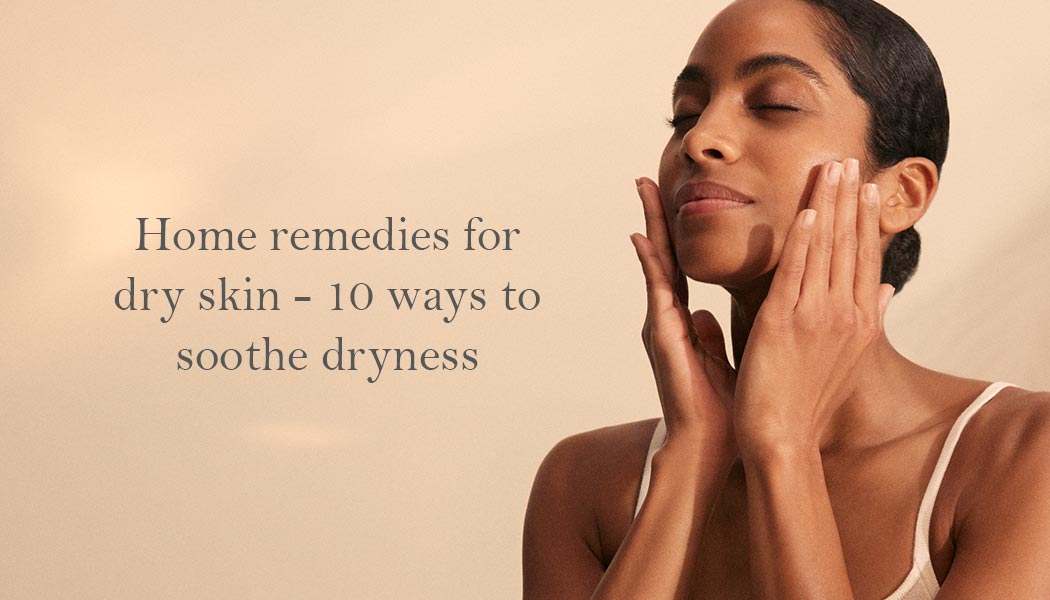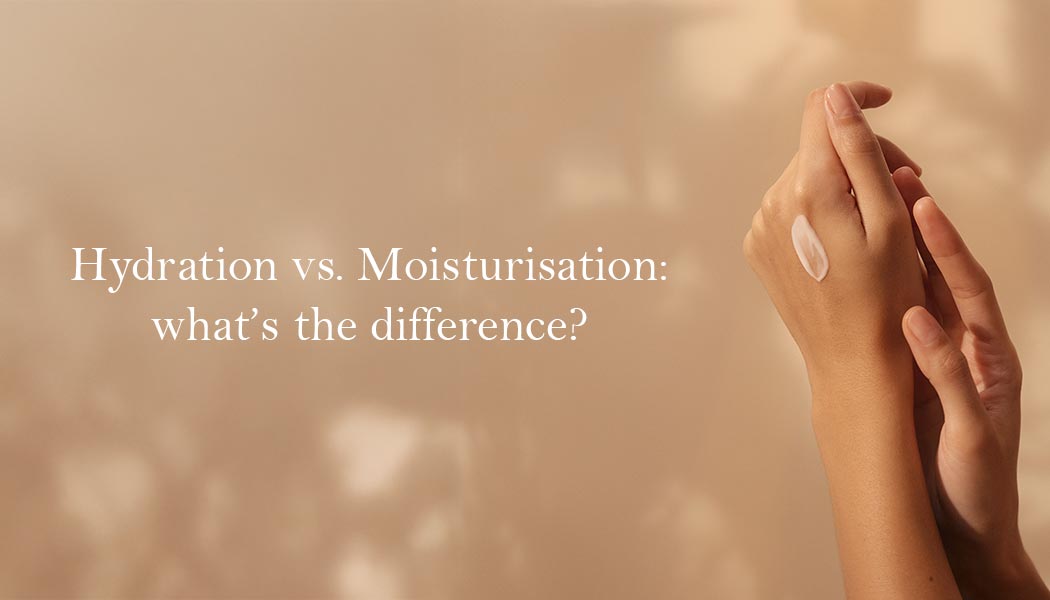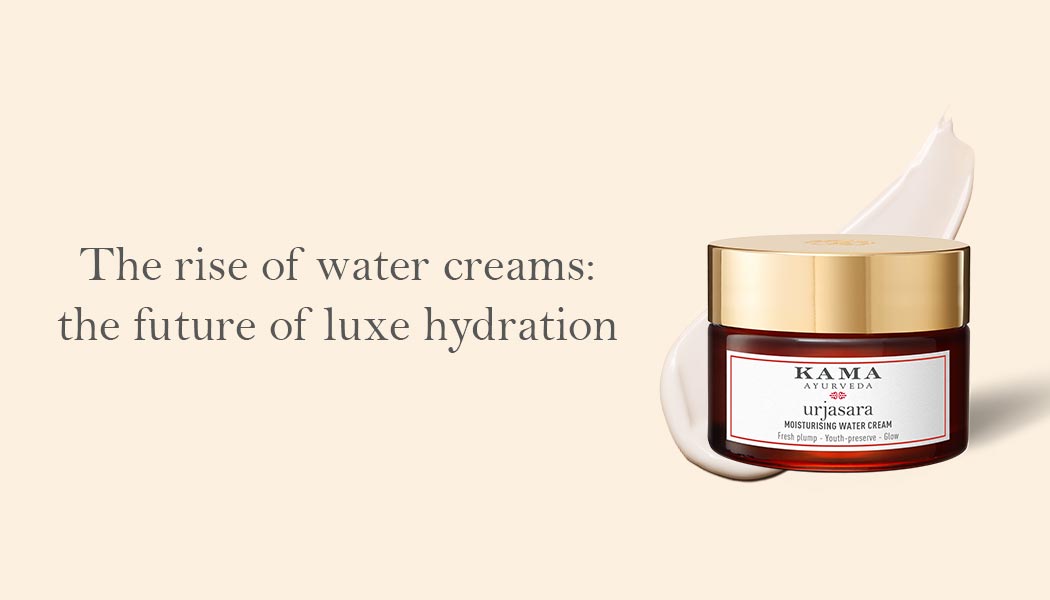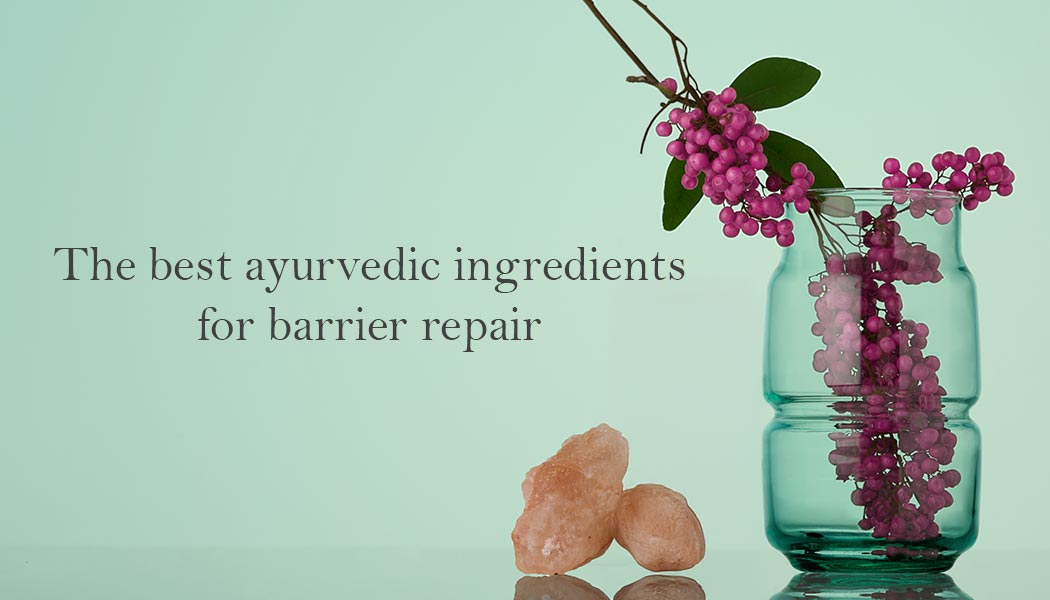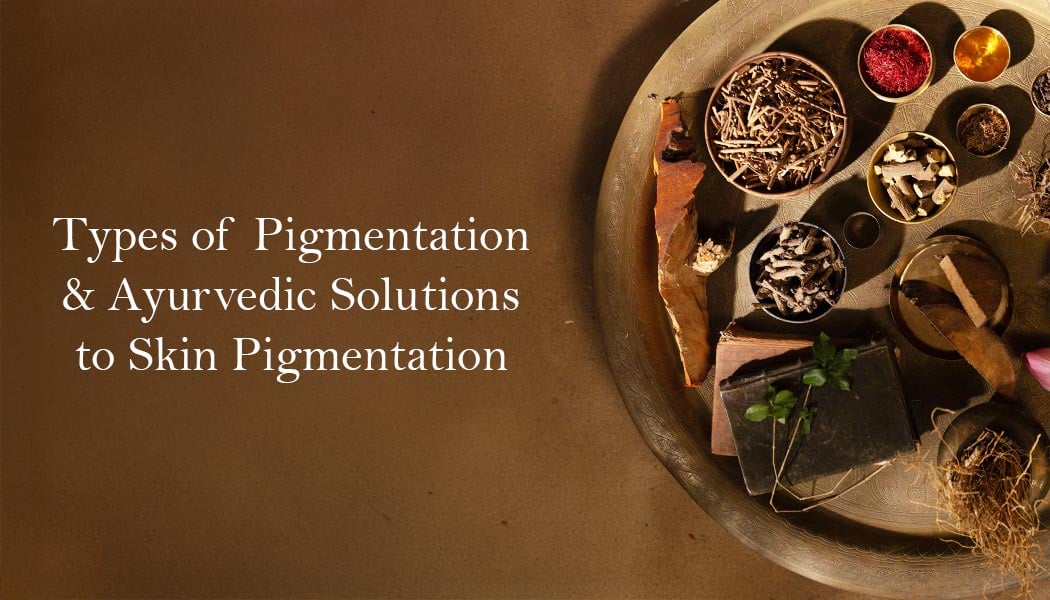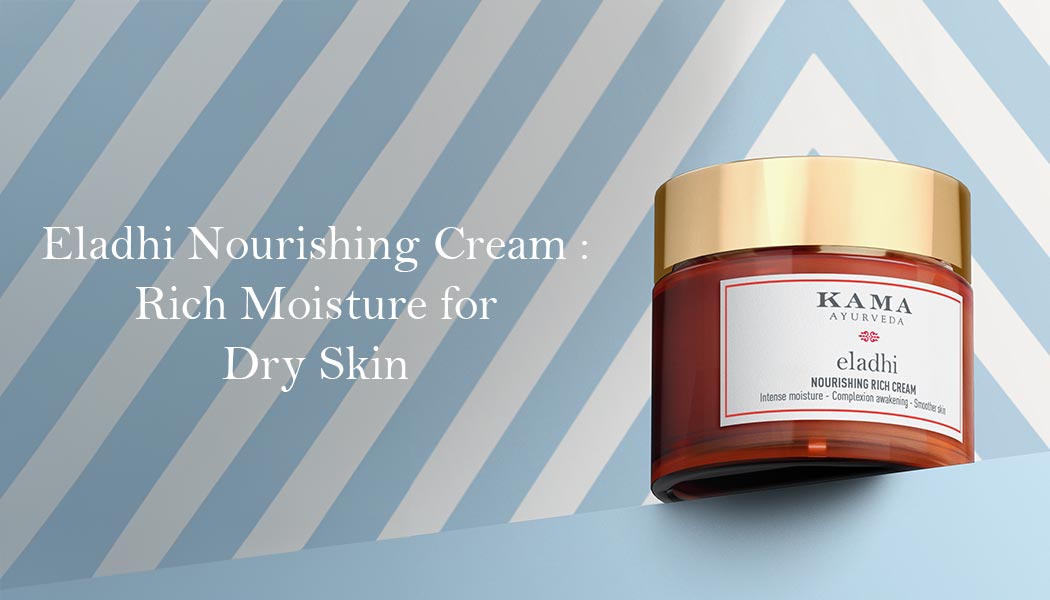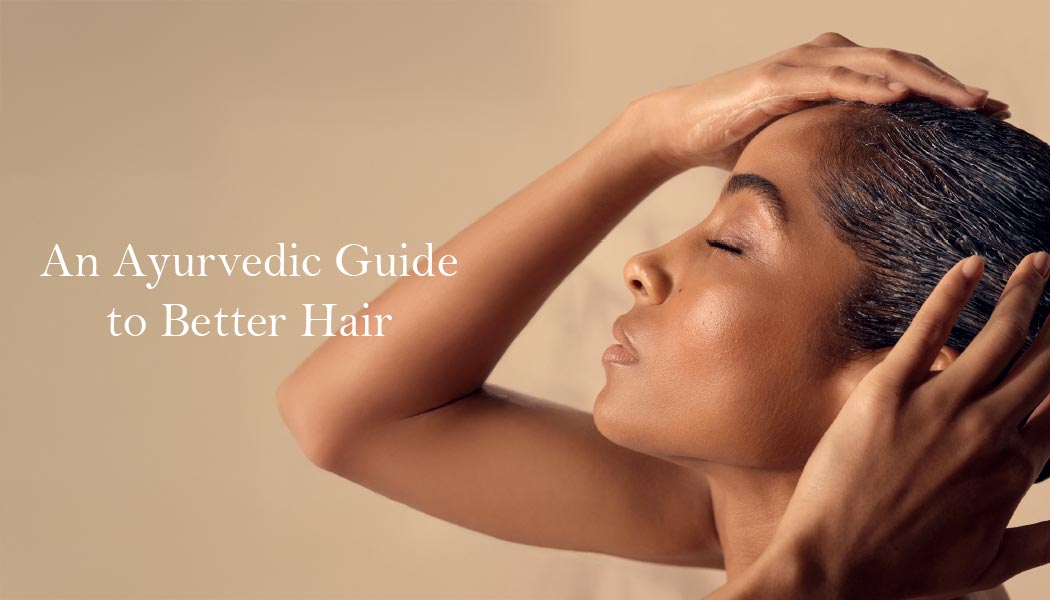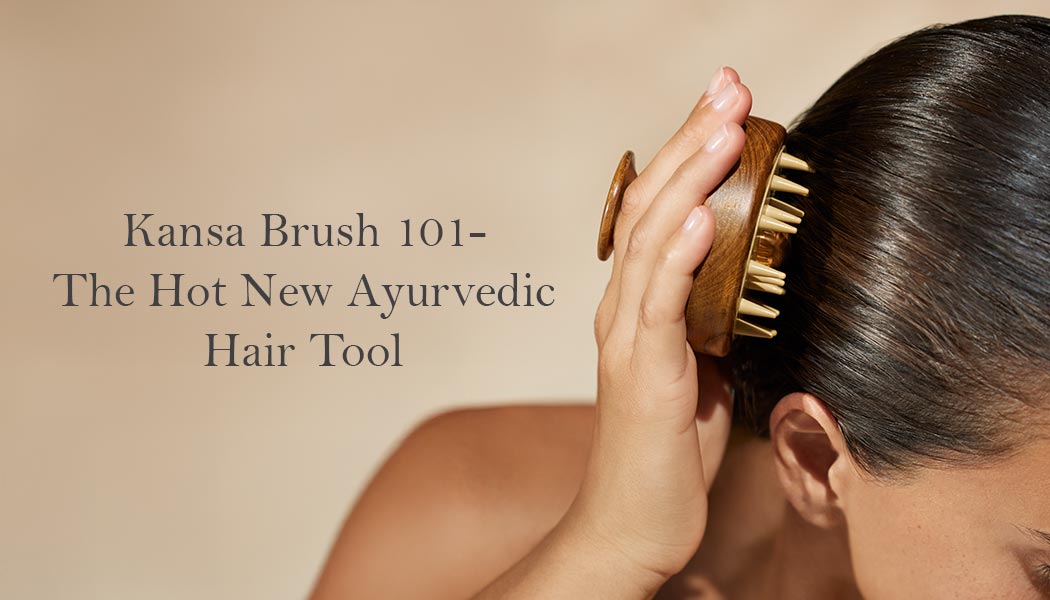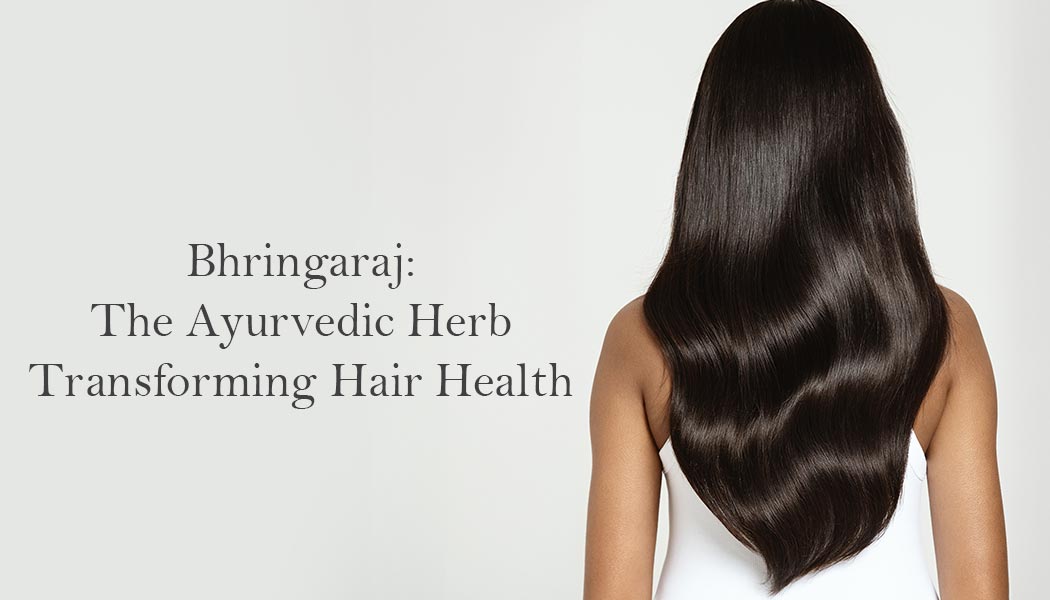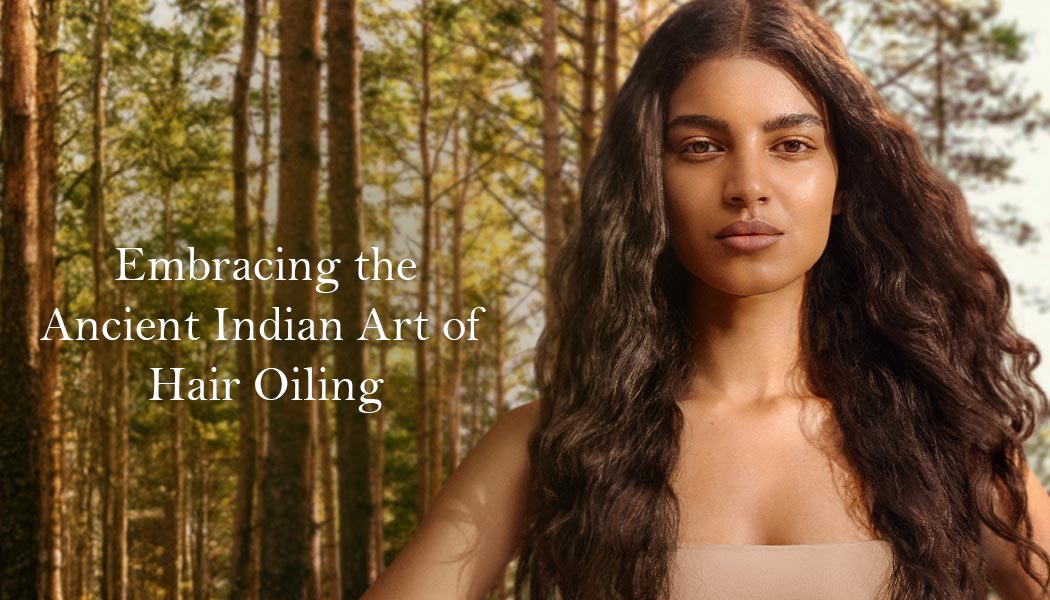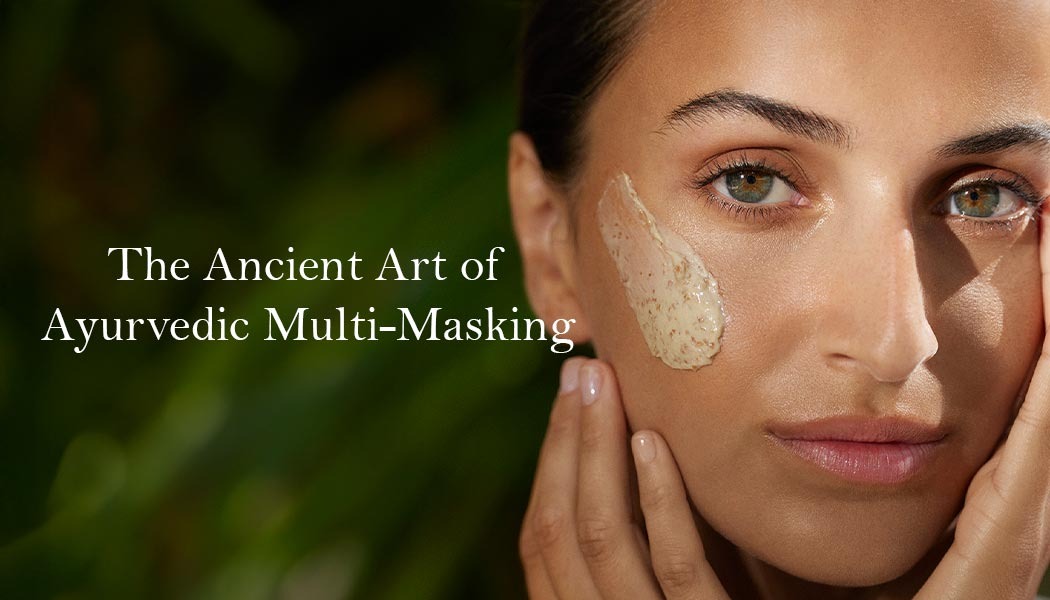- 15 March 2023
- 10 mins read
As we age, our hair texture begins to change. Our hair can become thinner, dryer, and more prone to breakage over time. Hormonal changes can also cause changes in hair texture.
If you've always wondered how to improve your hair texture, we've got good news - with a combination of proper hair care, a healthy diet, and lifestyle habits it's totally possible to achieve the hair of your dreams.
In this article, we'll cover the best ways to improve your hair - from using the right products to making dietary changes. Let's get started -
What Is Hair Texture?
Hair texture refers to the thickness, coarseness, and shape of individual strands of hair. It is determined by the shape of the hair follicle and the amount and type of proteins that make up each strand of hair.
Ayurveda, a traditional Indian system of medicine, places great importance on hair health and believes that the health of our hair is linked to the overall health of our body and mind.
Ayurveda identifies three doshas or energies that govern our physical and mental well-being: Vata, Pitta, and Kapha. These doshas also play a role in determining our hair type and texture.
- Vata dosha is associated with fine, dry hair that is prone to breakage and split ends.
- Pitta dosha is associated with medium-textured hair that may be oily or prone to premature graying.
- Kapha dosha is associated with thick, wavy hair that may be prone to excess oiliness and dandruff.

To promote healthy hair according to Ayurveda, it is important to balance the doshas through diet, lifestyle, and self-care practices.
3 Types Of Hair Texture
Understanding your hair texture is important for choosing the right hair care products and styling techniques. There are three main types of hair texture: fine, medium, and coarse.
Fine Hair
This type of hair texture is made up of smaller, thinner strands and tends to be more delicate and prone to breakage. Fine hair may benefit from lightweight, volumizing products and avoiding heavy oils and serums that can weigh it down.
Medium Hair
This hair type is somewhere in between, with strands that are thicker and stronger than fine hair but not as robust as coarse hair.
Coarse Hair
Coarse hair, on the other hand, is made up of thicker, more resilient strands that can be more difficult to style. It can benefit from rich, moisturizing products to help tame frizz and enhance shine.
In addition to thickness, hair texture can also be straight, wavy, curly, or kinky. This is determined by the shape of the hair follicle and the amount of curl in the hair strand.
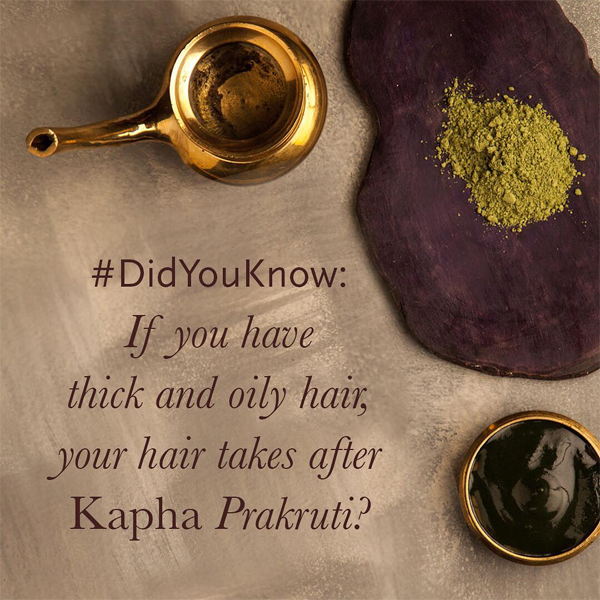
By taking the time to understand your hair texture, you can tailor your hair care routine to meet the unique needs of your hair, helping you achieve healthy, beautiful locks.
How To Identify Your Hair Texture
Identifying your hair texture is an important first step in developing a hair care routine that works for you. Here are some tips on how to identify your hair texture:
- Look at the thickness of your individual strands: Take a single strand of hair and hold it up to the light. If it is fine and barely visible, you have fine hair. If it is thicker and more visible, you likely have medium or coarse hair.z
- Evaluate the volume of your hair: If you have a lot of hair and it tends to look full, you may have medium or coarse hair. If your hair looks thin and lacks volume, you likely have fine hair.
- Observe your hair: Does your hair tend to frizz and fly away easily? This may be a sign of fine hair. Does your hair hold curls or waves easily? This may be a sign of medium or coarse hair.
Read - The Best Hair Care Routine For Your Hair Type
What Changes Your Hair Texture?
Aging can cause changes in hair texture due to various factors, including hormonal changes, genetics, and environmental factors. As individuals age, their hair may become thinner, drier, and more brittle due to a decrease in the production of sebum, a natural oil that keeps the hair moisturized.
Here are a few other factors that impact your hair texture.
Stress
Stress can affect hair growth and texture in several ways. One of the most common ways is through the production of cortisol, the hormone released by the body in response to stress. When cortisol levels are high, it can affect the hair follicles and cause them to shrink, resulting in weaker, thinner hair strands.
Stress can also disrupt the natural growth cycle of hair, causing more hair to enter the resting phase and eventually leading to hair loss. In some cases, stress-related hair loss may even result in bald patches or thinning hair.
Hormonal Changes
Hormones play a crucial role in regulating the growth and texture of hair.
Androgen hormones, such as testosterone, can alter hair follicles by increasing their sensitivity to the hormone dihydrotestosterone (DHT), leading to changes in hair texture. DHT can cause the hair follicles to shrink, resulting in thinner and shorter hair strands. This process is responsible for male-pattern baldness and can also affect women.
Hormonal changes during puberty, pregnancy, and menopause can also cause changes in hair texture. For example, during pregnancy, increased levels of estrogen can result in thicker and fuller hair.
Genetics
Hair texture is largely determined by genetics. Individuals inherit their hair texture from their parents, with certain genes dictating the shape, thickness, and pattern of their hair. For example, a gene known as the "curly hair gene" can cause the hair to be more curly or wavy.
Other genes can impact the color and texture of the hair, such as genes that determine melanin production. Additionally, genetics can also influence the rate of hair growth and its overall health.
Hair Styling Products
Hair styling products that contain harsh chemicals or high levels of alcohol can dry out the hair, leading to breakage, split ends, and a rough, brittle texture. Overuse of heat-styling tools like flat irons and curling irons can also damage the hair by breaking down the hair's natural proteins and weakening the hair shaft.
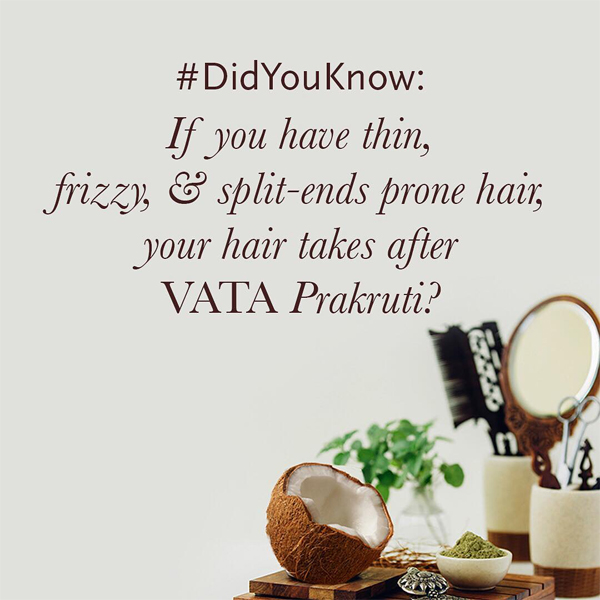
Poor Diet
A poor diet can have a significant impact on hair texture, as the hair relies on a balanced diet to grow strong and healthy. A diet lacking in essential nutrients like protein, iron, and vitamins can cause hair to become brittle, dull, and prone to breakage. Inadequate protein intake can cause the hair to become thin and weak, while a lack of iron can lead to hair loss.
Loss Of Collagen
Collagen is a protein that plays a vital role in maintaining healthy hair texture. Collagen gives the hair its strength and elasticity, and a loss of collagen can cause the hair to become thin, weak, and prone to breakage.
As individuals age, collagen production naturally declines, leading to changes in hair texture. Additionally, environmental factors like sun exposure and pollution can accelerate collagen loss, leading to premature ageing of the hair.
Pollution
Pollution can also contribute to changes in hair texture, as pollutants can accumulate on the hair and scalp, leading to inflammation and irritation. Additionally, exposure to UV radiation can cause hair to become dry and brittle, leading to split ends and breakage
10 Expert Ayurvedic Tips To Improve Your Hair Texture
According to Ayurveda, healthy hair is a reflection of overall physical and emotional well-being. By incorporating Ayurvedic hair care practices into your routine, you can improve hair texture and promote overall hair health.
1. Treat Your Hair As Per Your Dosha
Vata dosha results in dry, frizzy hair. Ayurvedic remedies like warm oil massages and nourishing hair masks made from herbs like Amla and Shikakai can help restore moisture and shine to the hair.
Pitta-dominant individuals, who often have fine hair that is prone to premature greying and thinning, can benefit from Ayurvedic remedies like Brahmi and Bhringraj oil to nourish the hair and promote hair growth.
Kapha dosha results in thick, oily hair. Ayurvedic ingredients like Neem and Henna help balance oil production and clarify the scalp.
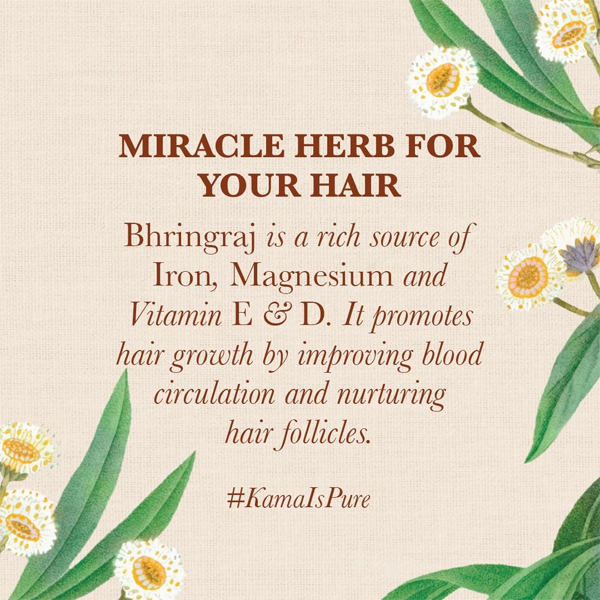
2. Shirolepa (Hair Mask)
Shirolepa is an Ayurvedic hair care practice that involves the application of a herbal paste to the scalp to improve hair texture and promote hair growth. The paste is made from a combination of herbs like Amla, Bhringraj, Neem, and Shikakai, along with other nourishing ingredients like coconut oil and honey.
The paste is applied to the scalp and left to sit for a period of time before being washed off with warm water. This treatment helps to nourish the hair follicles, strengthen the hair strands, and improve hair texture.
Shirolepa is a natural and effective way to promote healthy hair growth and improve hair texture without the use of harsh chemicals or synthetic ingredients. It is a popular Ayurvedic hair care practice that has been used for centuries to promote healthy hair and overall well-being.
We recommend using Kama Ayurveda’s Bringadi Intensive Repair Post Wash Hair Mask as it has the goodness of natural ingredients such as Bringadi, Amla, Indigo, Coconut Milk and Liquorice.

3. Murdhani Taila (Hair Oiling)
Hair oil can help to moisturize the hair, which is essential for improving its texture. When hair is dry and brittle, it can look dull and lifeless. Hair oil can penetrate the hair shaft, providing it with much-needed moisture and nutrients. We recommend Bringadi Intensive Hair Treatment (with ingredients such as Sesame, Amla, Bhringraj, Indigo and Balloon Vine) to improve hair texture.
You can also use the following oils regularly to improve hair texture.
1. Coconut Oil :
Coconut oil is a versatile natural remedy that can effectively improve hair texture. It contains medium-chain fatty acids that can penetrate the hair shaft, nourishing and strengthening the hair from within.
The moisturizing properties of coconut oil can also help to reduce frizz and improve shine, leaving hair looking soft and silky.
2. Sesame Oil :
Sesame oil is lightweight and easily absorbed, making it an excellent choice for those with fine or thin hair. It contains important nutrients such as vitamins E and K, magnesium, and calcium, which can help to nourish and strengthen the hair. Sesame oil can also help to improve blood circulation in the scalp, promoting healthier hair growth.
3. Herbal Hair Cleansers :
Herbal hair cleansers are made with natural ingredients such as herbs, plants, and essential oils. They are free from harsh chemicals like sulfates and parabens that can strip the hair of its natural oils, leading to dryness, breakage, and damage.
We recommend Bringadi Hair Cleanser as it has been formulated to nourish, repair, and add volume to your hair. It has herbal ingredients such as Amla, Bhringraj and Indigo that are known to improve hair texture.
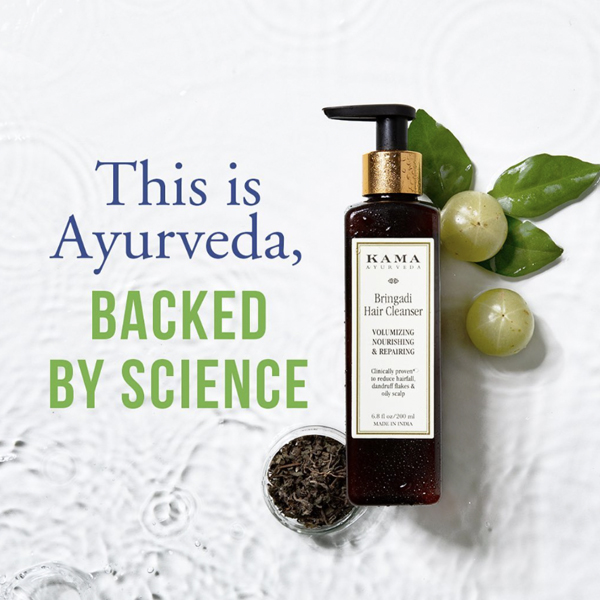
Read - 6 Best Ayurvedic Herbal Shampoos For Hair Fall
4. Healthy Diet
A balanced diet that includes a variety of nutrient-rich foods can provide your body with essential vitamins and minerals that are vital for healthy hair texture.
Some examples of foods that are beneficial for improving hair texture include leafy greens, nuts and seeds, fatty fish, eggs, avocados, berries, and sweet potatoes. Moreover, hair is primarily made up of protein, so consuming adequate amounts of protein is crucial for maintaining healthy hair.
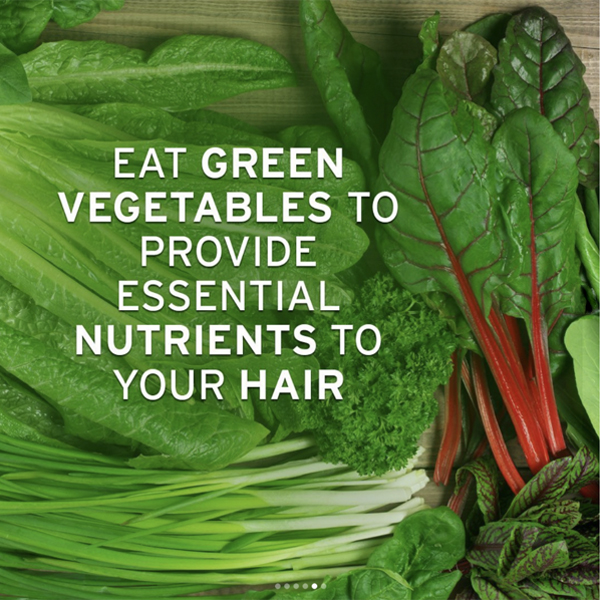
5. Microfiber Towel
Microfiber towels are made of a special type of synthetic fiber that is designed to be ultra-absorbent. This means that they can absorb water from your hair quickly, which can help reduce frizz and prevent breakage.
Regular towels can cause the hair to tangle, especially if you rub them vigorously against your hair. Microfiber towels are much gentler, so they are less likely to cause tangling and breakage.
6. Practice Stress Management
Chronic stress can lead to inflammation in the body, which can affect the health of the scalp and hair follicles. By managing stress levels, you can reduce inflammation and improve the overall health of your scalp, which can help improve hair texture.
Some effective ways to manage stress include regular exercise, head massage, meditation, deep breathing, yoga, and mindfulness practices.
7. Avoid Styling and Tight Hairstyles
Tight hairstyles, such as braids and buns, can pull on the hair and cause breakage and damage. Similarly, Heat styling tools can damage hair and cause dryness and breakage. It’s advisable to use protective products or avoid heat styling altogether.
8. Quality Sleep
A good and restorative night's sleep helps in the protein synthesis of the hair. It also helps with the release of enzymes and growth hormones. Sleep is also linked to the production of melatonin which aids hair growth.
Moreover, by getting enough sleep, you can help reduce stress levels, which further helps maintain healthy hair growth.
9. Avoid Chemical Hair Dyes
Natural and organic hair dyes are free of harsh chemicals which can damage the hair and cause it to become dry and brittle. Natural dyes such as Henna and Indigo are gentle and nourishing for the hair. They strengthen the hair, improve its texture, and make it more shiny and lustrous.
Natural and organic hair dyes may take longer to apply and process, but the results can last longer than traditional hair dyes. Moreover, they don’t damage hair even with regular use.
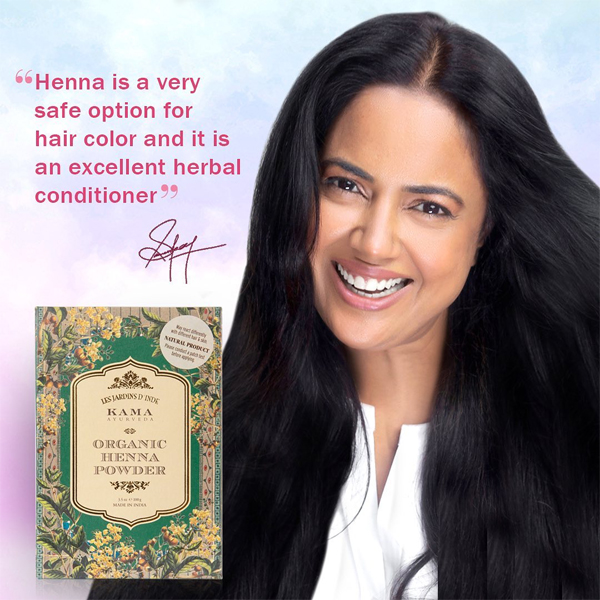
10. Don’t Overwash Hair
Shampooing your hair too often can strip it of its natural oils, which are essential for maintaining healthy hair. It can also disrupt the natural balance of your scalp, leading to dryness, itching, and dandruff. Only wash your hair when it’s necessary to remove excess scalp buildup. Else, it may impact your hair texture.
Read - How Often To Wash Hair? – Expert Advice
Does Your Hair Texture Change?
In conclusion, improving hair texture is a process that involves a combination of factors, including proper hair care, nutrition, and lifestyle changes. Using natural hair care products, eating a balanced diet, reducing stress, and protecting hair from damage can help one achieve healthier and smoother hair texture.
However, it is important to keep in mind that the texture of your hair is also largely determined by genetics, and some people may naturally have coarser or finer hair. You can’t always alter your natural hair texture, but you can always make your hair healthier by following these tips.
Shreya Dalela is a certified Yoga instructor and a professional dancer trained at The Danceworx. She’s passionate about Ayurveda and holistic living with over 6 years of experience in doing extensive research and content creation in the domain.

Certified Ayurvedic Doctor (Central Council of Indian Medicine) working in Kama Ayurveda as an Assistant Training Manager.

